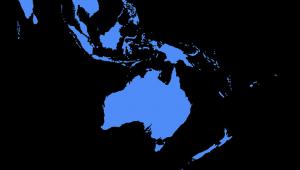The Energy Storage Partnership will foster international co-operation to bring technology and regulatory solutions to help the rapid uptake of renewable energy, such as wind and solar power, in developing countries.
Announced at Wednesday’s ‘clean energy ministerial forum in Vancouver, it includes 29 organisations across the world that will work together to ‘decarbonise’ power systems in developing countries.
The World Bank explained energy storage is the key to integrate renewable resources at the scale necessary to mitigate climate change but that developing countries’ grids were “not yet fully considered in the current energy storage market”. Although, these countries may have the largest potential for battery deployment, the bank added.
The market for batteries is currently driven by the electric vehicles industry, the Washington-based organisation noted, and said there was a “clear need to catalyse a new market for batteries and other energy storage solutions”.
Riccardo Puliti, senior director for energy and extractives at the World Bank, said: “The fast growth we’re seeing in the electric vehicle market is exactly what we need for energy storage in power systems around the world.
“We want to see batteries connected to the grid, serving mini-grids, and enabling much more use of renewable power from the sun and wind.”
In September the World Bank announced a $1bn scheme to accelerate investments in battery technology in low- and middle-income countries. It aims to raise another $4 billion.
The organisation expects worldwide demand for battery storage to reach 2,800 gigawatt hours by 2040 - equivalent to storing just over half of all renewable energy currently generated in a day. It estimates there is currently 4-5 gigawatt hours installed in developing countries.
It says it has financed 15% of grid-related battery storage in developing countries to date.
This year’s Innovate4Climate, a leading global platform on climate finance, will make it prime focus battery storage.
Although, energy storage drive is not limited to electrical battery technology. About 95% of energy storage linked to electricity grid systems is currently provided by pumped hydro, a century-old technology based on pumping water into raised basins, according to an article in the Financial Times.
The Australian government has just backed a $3.5bn ‘water battery’project.













